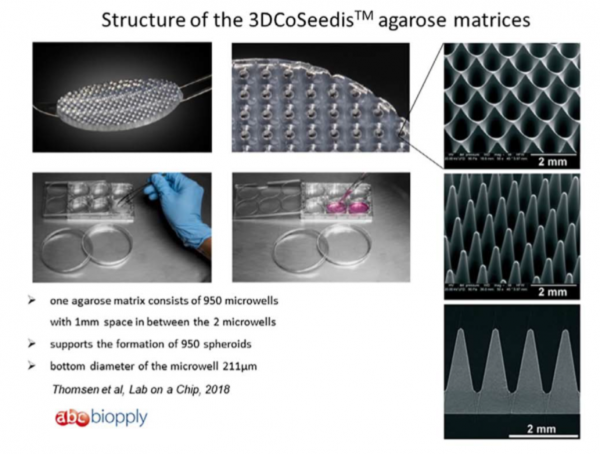A new publication by Liliia Paniushkina, Elena Gueso-Navarro, and Xu Cheng from the research group of Irina Nazarenko from the University of Freiburg, Germany, has just shown the remarkable benefits 3D CoSeedis™ offers in the production of extracellular vesicles (EV) from 3D cultures. In this article, published in October 2020 in Methods of Enzymology, they give in depth insight in the use of various 3D systems in the preparation of EVs and underline the outstanding performance and advantages 3D CoSeedis™ offers in comparison to other methods.
Advantages include:
- Long term culture
- Homogenous and controlled size of cell aggregates
- Controlled cell number and viability
- High reproducibility
- Applicability to various primary cells and cell lines
Paniushkina et al., Three-dimensional cell models for extracellular vesicles production, isolation, and characterization; p7, Oct 2020)
The article give detailed instructions and lists protocols on how to use 3D CoSeedis™ in EV production, isolation and analysis. Presenting well-structured and useful decision trees and schematic representations of the workflow, the authors describe how 3D Coseedis™ can be used to collect highly comparative samples of EVs from various cell types (primary cells, stem cells, and cell lines). Furthermore, they also define what the critical parameters are in such an experimental set-up.
The group of Irina Nazarenko further shows that cells grown under 3D conditions produce substantially higher amounts of vesicles of different sizes which strongly supports the application of 3D models in EV studies.

Picture source:
Three-dimensional cell models for extracellular vesicles production, isolation, and characterization
Liliia Paniushkina, Elena Grueso-Navarro, Xu Cheng, Irina Nazarenko
Methods in Enzymology, October 2020; https://doi.org/10.1016/bs.mie.2020.09.005
